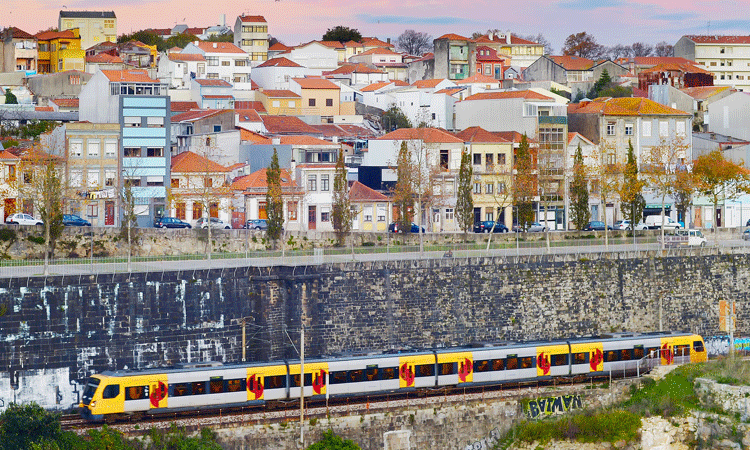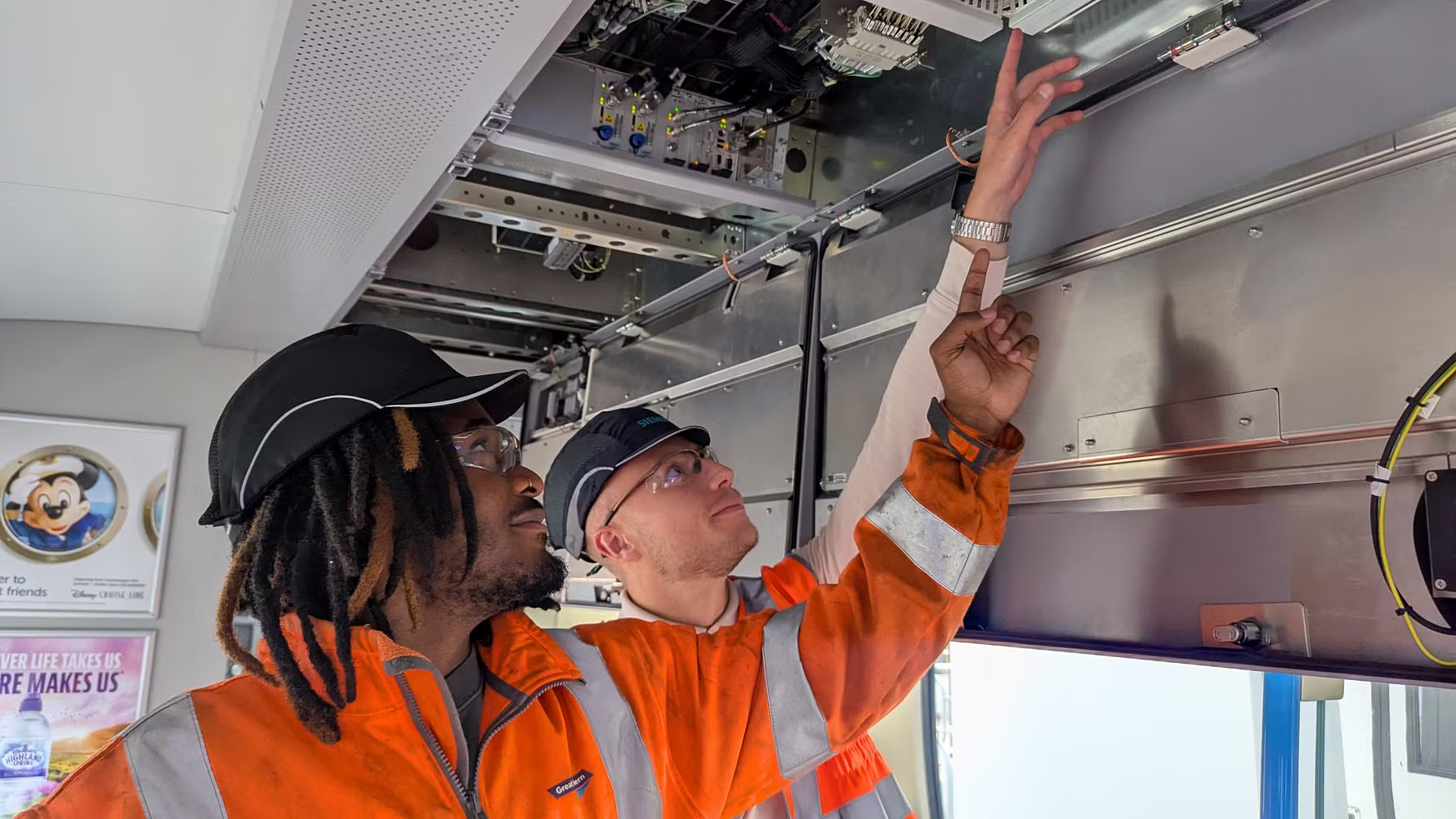The migration path towards ERTMS in Portugal
Posted: 3 December 2014 | | No comments yet
Interoperability has become a key word in the European transport policy, with the aim of improving transport services. The application/renewal of signalling and telecommunication systems in the Portuguese railway network will follow this legal requirement and migrate to the new European Rail Traffic Management System (ERTMS). Jose P. Neves from REFER Telecom and Fernando Vendas from REFER Engineering, provide more details.


The deployment of these new technologies, ETCS and GSM-R, can be seen as part of the wider process of the technological development of signalling and telecommunications systems within the Portuguese railway network. These new technologies will be an important improvement in the harmonisation and performance of railway traffic management systems from the perspective of intra-operability within the Portuguese railway network and interoperability between Iberian railway networks and the Atlantic Corridor, in terms of capacity, safety and efficient and sustainable rail operation. The migration to ERTMS is a major challenge at the national level; it will impact on the infrastructure, rolling stock and control centres as well as on the operational rules. The success of this challenge requires the replacement of traditional practices and strategies used so far in the Portuguese railway signalling sector. New perspectives need to be developed, considering the technology itself, the number of new facets and different operational scenarios for the implementation of this new system. It is important to know the technology as well as the different application possibilities and their affordability.
The Portuguese Strategic Transport Plan
The new Portuguese Strategic Transport Plan (PETI 3+) was updated, approved and publically presented in June 2014. In this plan priorities and strategic orientations for railways sustainable development towards the horizon 2014–2022 were established taking into account the actual economic context.
The main goal is the development/update of the main axles of the Portuguese TEN-T rail supported by the following improvements:
Join our free webinar: Rail cyber-security in a time of technological and regulatory transformation
Join our expert panel, including speakers from Nokia and Siemens Mobility, to explore the critical convergence of cybersecurity and 5G rail comms.
Date: 3 Dec | Time: 15:00 GMT
Can’t attend live? No worries – register to receive the recording post-event.
- Network fully electrified at 25,000V
- ERTMS signalling deployment
- Mitigate the network constraints for freight trains with 750m and 1,400 tonnes
- European gauge installation to increase operational sustainability.
In general, it was necessary to prioritise projects granting a high degree of sustainability financial and affordability for the State and for which it is possible to mobilise private funding sources and to maximise community funding and other specific available funds.
The specific plan to be deployed for the signalling and telecommunication systems, especially to ERTMS subsystems, will take into account their technical complexity and possible migration scenarios, evaluating/monitoring the safety targets. An in-depth analysis of the following factors considered critical for success will be made:
- Available technical signalling and telecommunication open market solutions and perceived technological risk
- Levels of service/quality/safety
- Life-cycle costs (investment and maintenance)
- Intraoperability/interoperability
- Compatibility of timelines and projects execution within the 2014–2022 horizon
- The remaining useful life-cycle of signalling and telecommunication existing equipment
- Perceived technological risk and lower interface costs
- To maximise specific EU available funds for this type of systems.
These analyses include the technical migration available scenarios to allow performance and the guarantee of compliance with deadlines to be combined with reduced risk but with quality of service, competitiveness and affordability.
Control-Command and Signalling (CCS) systems
Geographical/technical de-grouping and priorities; current status
The backbone of the Portuguese network is equipped with electrical or electronic interlockings and the train protection system EBICAB 700 – Class B, as defined in the CCS TSI. The EBICAB 700 was developed/deployed in the late-1980s and is assumed to be obsolete in the short-term.
The traffic on the backbone is a typical mix of long-distance, regional and even suburban passenger traffic, some transit as well as long- and mid-distance freight traffic. The operators request a free circulation of their rolling stock, so there are no closed circulations (with the exception of Cascais Line). Some small lines have only freight traffic. A private operator circulates between Lisbon and Setúbal (suburban service).
Forecast of the Portuguese rail network towards the 2014–2022 horizon
Taking into account the priorities and strategic orientations defined in the Portuguese Strategic Transport Plan, the main TEN-T axles/priorities are:
- The Atlantic axle: Sines–Lisbon–Aveiro–Porto/Leixões
- The international north connection: Aveiro–Vilar Formoso
- The south international corridor: Sines/Setúbal/Lisbon–Caia.
In detail, according to the diagnosis of the existing network, and the multi-criteria analysis performed based on the factors considered critical for a successful modernisation/renewal plan, the following geographical/technical de-grouping and priorities specific for CCS systems has been set for the 2014–2022 horizon:
- Algarve Line: Section between Olhão and Vila Real de Santo António (On-going project)
- Northern Line:
- Line section between Válega and Gaia (Forecast 2019)
- Line section between Vale de Santarém and Entroncamento (Forecast 2018)
- Line sections between Alfarelos, Louriçal and Figueira da Foz (Forecast 2017)
- Douro, Minho and West Lines
- Line section between Caíde and Régua (Forecast 2019)
- Line section between Nine and Valença (Forecast 2018)
- Line section between Meleças and Louriçal (Forecast 2020)
- Beira Baixa Line:
- Line section between Covilhã and Guarda (Forecast 2018)
- Évora–Caia Connections:
- Line sections between Évora, Évora Norte and Caia (Forecast 2019/2020)
- Itinerary Sines/Lisbon–Caia (Forecast 2020)
- New Beira Alta connection (Forecast 2021/2022)
- New South Line connection (Forecast 2021/2022)
- Cascais Line (Forecast 2021/2022).


Technical general scope foreseen for the CCS systems
The modernisation/renewal programme under study is considered as an integrated project including CCS systems and other subsystems relating to railway safety, namely telecommunications. The aim of these systems is to ensure the command, control and supervision of the entire rail system in an efficient, reliable and safe manner. These systems complement the rail substructure and superstructure general programme, and will include:
- Control-Command and Signalling systems (CCS):
- Signalling interlockings, object controllers, and track equipment (train detection, points etc.)
- The ERTMS subsystems (ETCS and GSM-R)
- Diagnosis subsystems (data recording and maintenance support)
- Specific telecommunications systems dedicated to rail operation systems and communications networks which support the CCS system as well as other systems and applications
- Operations support systems (Traction Energy control, Technical Supervision of Infrastructures, Passenger information, CCTV etc.)
- Complementary safety systems (hot box detection, dynamic weighing etc.)
- Operational Control Centres
- The interface between infrastructure signalling and telecommunication systems and the on-board systems (ETCS and GSM-R radio equipment)
- Specific power supply systems for signalling and telecommunication equipment.
The implementation of the ERTMS system which includes the ETCS and GSM-R subsystems as well as the respective specific interfaces with the CCS systems is aligned with the European objective and related community legislation. The model under study will be compliant with this legislation, the timeline objectives for implementation, and be compliant with safety and interoperability directives. The CCS systems to be installed will allow operation of ERTMS/ETCS as a main operating system.
Technical migration scenarios under study
The ERTMS Migration Plan technical definition aims to be the full integration of the Portuguese rail network with the trans-European system, namely in what concerns harmonised operation and operations within Iberia and the Atlantic Corridor. It also ensures interoperability for different Portuguese rail network operators as well as harmonising on a national level (intraoperability) the infrastructure with rolling stock in compliance with the ERTMS/ETCS migration national plan. Articulation between the new structure and the already existing CCS Class B system (CONVEL) will also be granted.
In order to define the ERTMS Migration Plan, a Working Group was established with all the national stakeholders. This Group has the following aims and goals:
- Identification of the legal and technical ERTMS constrains/drivers for their national implementation in correlation with PETI 3+ and with actual financing framework
- Identification and characterisation of the possible technical/operational migration scenarios for ERTMS systems (short-term 2014 to 2022; medium-term after 2022)
- Technical management strategy for signalling and telecommunication systems, taking into account the life-cycle of existing assets. This includes, for each scenario, a complete rollout planning for infrastructure and rolling stock subsystems
- Risk analysis and cost-benefit for each scenario
- Strategic guidelines for development of national migration sectorial plans (infrastructure and rolling stock)
- To maximise specific EU available funds for this type of systems.
- Technical support to dialogue on cross-border sections and planning coordination with Spain.
Concerning the ETCS subsystem, up to now, three main migration scenarios were identified and are currently under analysis, including:
- Scenario A – STM (ETCS + STM on-board)
- Sub-Scenario A1 – With external STM
- Sub-Scenario A2 – With bi-standard STM
- Scenario B – On-board duplication (ETCS + Class B system on-board)
- Scenario C – Trackside duplication (ETCS + CONVEL on trackside)
- Sub-Scenario C1 – With ETCS Level 1
- Sub-Scenario C2 – ETCS Level 2.
Telecommunications systems
Modernisation of the Portuguese rail communication network
As a part of a major project of modernisation of the Portuguese rail network, the railway telecommunications network was, from the 1990s, deeply renovated and enlarged, in what concerns the network itself as well as the services made available, not only railway telecommunications in the strict sense (fixed and mobile), but also other rail services usually under the responsibility of the Telecommunications Department (passenger information, time synchronisation, video surveillance, etc.).
As one of the most important results of this modernisation, since 2009 the entire Portuguese rail network is equipped with optical fiber cables, being, at least, one of the first European countries to achieve that goal.
Another important achievement in the modernisation path of rail communications concerns the Operations Support Network; a network intended to support the following:
- Operational Voice service communications, meaning voice systems specifically dedicated to railway operation
- Operational Data service communications, dedicated to supporting different telematics subsystems that support Traffic Control and Command functions
- Operational Video service communications, specific to the transport of images associated with different video subsystems used at Operation and Safety/Security functions, and also at Videoconference.
This network was initially supported by TDM transmission solutions (PDH and SHD) but, with the progressive computerisation of the operation, there was a need to support different applications in the same network and a packet-switched data transmission network was created. With the growth of desktop computers use, local area networks (LAN) emerged as well as the need to interconnect them. The decision was taken to invest in the IP protocol as a basis for the development of the interconnection network for the different LAN, and, later on, with the rapid developments in communications infrastructure and applications based on the IP protocol, high-speed, high-performance and low-cost IP/Ethernet/Optical Fiber networks became available. The necessary tests and developments were made in order to enable the convergence of all the Railway Operation support systems into communications support on the IP transmission infrastructure (‘IP Convergence’) and the Portuguese railway network was the first European network to have all its Operation Support systems and applications migrated to IP transmission, as it was officially recognised by UIC.
A very important factor to the success of this migration was the knowledge and experience of Refer Telecom on the technical and functional requirements of each system and application, being possible, this way, to guarantee the quality of service parameters (delay, latency, jitter, etc.) required for the correct operation of the most demanding services, like VoIP (Operational Telephony), Video surveillance, Signalling and Command-Control systems, etc.
The GSM-R Project
The GSM-R Project for the Portuguese rail network was established in 2008/2009, with a preview of installation on almost 2,000km by the end of 2013.
Some of the most important technical options for the final configuration included:
- Two MSC with geographical redundancy
- Dual Coverage on lines equipped with ETCS 2, with MSC diversity
- Dispatcher System with redundant Dispatcher System Switch (DSS) and MSC connection diversity
- Migration strategy by double equipment at the infrastructure (GSM-R plus legacy analogue system)
- All the fixed connections supported by IP/MPLS, with ring configurations
- Installation of GPRS/EDGE
- eLDA trough connection of the IN/DSS with the Train Describer system
- Radio planning of Refer Telecom responsibility, with use of special planning tool for railways environment, developed in cooperation with Lisbon University (in the meantime awarded with two international prizes – USA and Australia).
This project was stopped due to financial reasons, with the only exception of a pilot installation on the Cascais Line (Lisbon suburban area), and it’s being retaken at this moment, according to PETI3+ guidelines and the European Directives concerning ERTMS deployment. The Cascais Line (pilot project) should be in commercial operation in the short-term, and the first tenders concerning a new project (part of the Algarve Line) had been initiated. The last available version of the final configuration is similar to the previous project and most of the same technical configurations and options must be kept.
However, some priorities shall be quite different related with the former project, due to the priorities defined at PETI3+ and the legal obligation to install GSM-R at newly modernised lines. As a consequence, the migration strategy has to be reviewed: actually, some lines, that are part of the TEN-T network and are now included in the GSM-R project due to modernisation reasons, are not equipped with the legacy analogue radio system. As a result, dual-mode cab radios or network dual-coverage must be considered – the latter meaning that, on those lines, new installations of the legacy analogue radio system should be required.
According to this review of the project, all the BTS’s should be native IP, directly linked by IP-MPLS, a solution pioneered by REFER Telecom at European level, in the scope of the Pilot Project.
Biography
José P. Neves is an Electrical Engineer (Electronics and Telecommunications) and has worked continuously and exclusively since 1969 in the area of Railway Telecommunications – at CP, REFER and currently at the Railway Services and Communications Department of REFER Telecom. He is a Member of the ERIG (European Radio Implementation Group) and FRMCS (Future Railway Mobile Communications Systems) UIC Groups.
After graduating in Electrotechnical and Computer Engineering from the Higher Technical Institute (IST) in the field of control and robotics, Fernando Ribeiro Vendas took a post-graduate course in Engineering and Technology Management at the same institute. He started his career in 1994 in the Signalling Engineering Department of CP working in design, technical quality and the commissioning of rail signalling installations and Traffic Control Centres (CTC), which continued until 2003 when he joined REFER. He has over 20 years of experience in signalling including feasibility studies, engineering, project management, technical quality, security and test and commissioning of railway signalling and Traffic Control Centres (CTC) installations. Fernando has been a Consultant in the areas of Security Management, approval/validation and verification of new technical solutions for Command, Control and Signalling. From 2007 to 2011 Fernando was in charge of signalling and telecommunications in the RAVE Engineering Department and was involved in the preparation of the tendering processes for the Portuguese high-speed project. Since 2013, Fernando has been the Director of the Signalling and Electromagnetic Compatibility Department at REFER Engineering.
Stay Connected with Global Railway Review — Subscribe for Free!
Get exclusive access to the latest rail industry insights from Global Railway Review — all tailored to your interests.
✅ Expert-Led Webinars – Gain insights from global industry leaders
✅ Weekly News & Reports – Rail project updates, thought leadership, and exclusive interviews
✅ Partner Innovations – Discover cutting-edge rail technologies
✅ Print/Digital Magazine – Enjoy two in-depth issues per year, packed with expert content
Choose the updates that matter most to you. Sign up now to stay informed, inspired, and connected — all for free!
Thank you for being part of our community. Let’s keep shaping the future of rail together!
Issue
Related topics
European Rail Traffic Management System (ERTMS), European Train Control System (ETCS), Global System for Mobile Communications – Railway (GSM-R)







